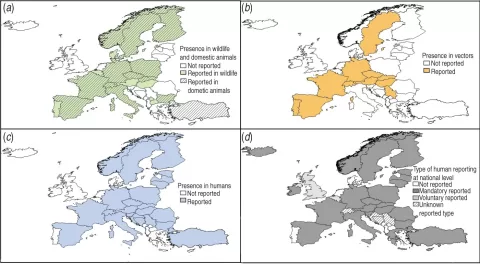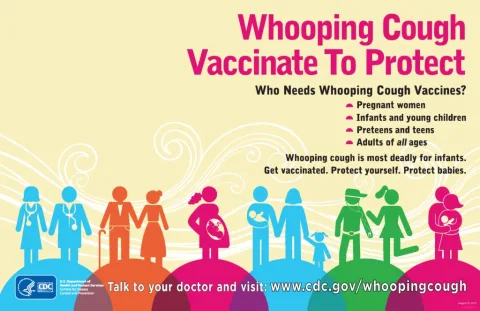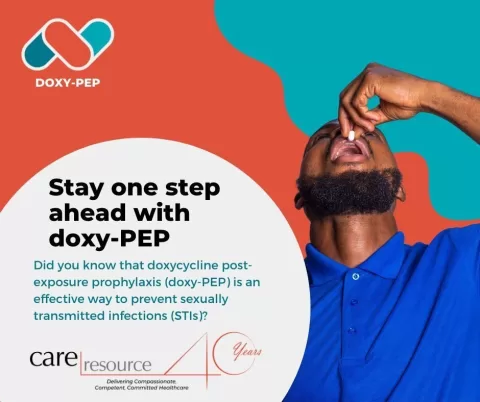Murine typhus transmission, primarily caused by the bacterium Rickettsia typhi, has gained attention due to its concerning resurgence, especially in urban areas. This disease, typically spread through fleas from infected rodents, highlights significant urban health risks as populations increase and environmental conditions change. Recent murine typhus cases, including a troubling incident in Texas involving organ donor infection during kidney transplants, underscore the potential dangers that these infections pose. Both healthcare providers and the general public must be made aware of how this treatable yet serious ailment can thrive in densely populated settings. Given the implications for organ transplant recipients, awareness and preventive measures are more essential than ever, as this condition could lead to severe complications or even fatalities.
The transmission of murine typhus, also known as endemic typhus, signifies a growing health concern related to flea-borne diseases. Originating from the Rickettsia typhi bacterium, this infection is typically associated with rodent populations and their fleas, yet urban environments have seen a rise in reported cases. The recent case of organ donor-transmitted murine typhus reinforces the necessity for improved vigilance regarding organ donor infections and associated health risks. Urban health risks and the emergence of infections in densely populated areas demand urgent attention to prevent further outbreaks. Understanding the dynamics of murine typhus through its various transmission pathways can help bolster public health responses.
Understanding Murine Typhus and Its Transmission
Murine typhus is a zoonotic disease caused by the bacterium Rickettsia typhi, primarily transmitted through fleas that infest rodents. As urban areas expand and human populations increase, interactions with rodent populations become more frequent, elevating the risk of transmission. The disease is characterized by symptoms such as fever, headache, and malaise, which can quickly escalate into more severe conditions, including septic shock and organ failure. This pathogen is present in both temperate and tropical climates, making it a global health concern.
Historically, murine typhus cases have seen a resurgence, particularly in urban settings such as Texas and California, where conditions favor the proliferation of flea populations. The traditional transmission cycle involves rodents, but there is also emerging evidence of cat fleas playing a role in the disease dynamics in urban landscapes. Understanding these transmission pathways is crucial for developing effective public health strategies and informing healthcare professionals about the potential risks, especially in an era where organ donation is critical.
Risks of Organ Donor Transmission in Kidney Transplants
The recent case of organ donor transmission of Rickettsia typhi highlights a significant public health issue regarding kidney transplants. In 2024, two kidney transplant recipients in Texas contracted murine typhus after receiving organs from a donor who had been infected. This unprecedented case emphasizes the risks associated with organ donation from individuals who may exhibit mild or unrecognizable symptoms of murine typhus. It raised alarms within the medical community about the adequacy of screening protocols for organ donors in light of emerging infectious diseases.
Such occurrences underline a growing need to enhance disease surveillance and preventive measures for organ donors, especially in regions where murine typhus cases are on the rise. The complexities of managing organ transplant recipients increase with the risk of infections from donors, particularly in urban environments where free-roaming rodents and flea populations are prevalent. This calls for a reassessment of organ donation policies and better education for both healthcare providers and prospective donors regarding the potential health risks involved.
Urban Health Risks Associated with Increasing Murine Typhus Cases
The resurgence of murine typhus cases in urban settings poses a multifaceted challenge, requiring public health awareness and proactive measures. Factors contributing to this uptick include environmental adaptations that encourage rodent populations, such as abandoned buildings and increased waste. As urbanization continues, cities must address the environmental conditions that facilitate the survival and transmission of Rickettsia typhi through improved sanitation and pest control measures.
Moreover, healthcare systems in densely populated areas must remain vigilant to the signs of murine typhus and educate their communities about prevention. This includes the importance of timely diagnosis and treatment, as well as awareness campaigns emphasizing the link between urban health risks and zoonotic diseases. Strengthening the relationship between urban health initiatives and infectious disease epidemiology can effectively curtail the spread of murine typhus and improve overall community health outcomes.
Symptoms and Complications of Murine Typhus
The symptoms of murine typhus can be deceptively mild at onset, often resembling flu-like illness. Initial symptoms include fever, chills, headaches, and malaise, which can lead individuals to overlook the potential severity of the condition. As the illness progresses, however, it can result in more serious health complications, such as pneumonia, renal failure, or even septic shock when not treated promptly. This disease not only poses a risk to individual health but can also lead to broader public health concerns, particularly in vulnerable populations.
Complications arising from murine typhus can place a significant strain on healthcare resources, especially if outbreaks occur in at-risk urban environments. The swift progression from mild symptoms to severe complications necessitates effective healthcare responses, including quick diagnostic processes and access to appropriate treatments such as doxycycline. By recognizing the potential for severe outcomes, healthcare providers can improve patient care and outcomes significantly.
Preventing Murine Typhus Through Public Awareness
Raising public awareness about murine typhus is essential to preventing outbreaks and safeguarding community health. Informing the public about the transmission methods—primarily via flea feces and potential contact with infected animals—can help individuals take proactive steps to minimize their exposure. Educational campaigns can highlight the importance of sanitation and pest control, particularly in residential areas with known rodent populations.
Community engagement is crucial in combating the resurgence of murine typhus, emphasizing action such as regular flea treatments for pets and responsible waste management to deter rodent infestations. Collaboration between public health officials, community leaders, and healthcare providers can lead to a more informed public, which will contribute to reducing health risks associated with murine typhus transmission and its related complications.
Emerging Strategies for Healthcare Providers
Healthcare providers play a vital role in managing and preventing murine typhus cases, especially in areas with a historical prevalence of the disease. Strategies including enhanced screening of patients for murine typhus symptoms, particularly in transplant recipients, can lead to earlier diagnosis and treatment, potentially saving lives. Continued education for healthcare professionals regarding the risks associated with Rickettsia typhi is essential to improve clinical awareness and response.
Emerging strategies may include developing rapid diagnostic tests and investing in research to understand the epidemiological shifts surrounding murine typhus. By staying informed on the latest developments in infectious diseases and antimicrobial resistance, healthcare professionals can be better equipped to tackle cases of murine typhus and ensure appropriate treatment regimens are followed, thereby improving patient outcomes.
The Role of Flea Control in Preventing Murine Typhus
Effective flea control is a cornerstone in the prevention of murine typhus, addressing one of the key transmission pathways for Rickettsia typhi. Communities can implement integrated pest management strategies that focus on reducing flea populations in areas prone to rodent infestations. These strategies may include environmental changes, such as landscaping adjustments, sanitation improvements, and the responsible use of insecticides to eliminate flea habitats.
Homeowners are encouraged to take proactive measures by maintaining their yards, treating pets regularly for flea infestations, and ensuring that living spaces are free from rodent access. Public health campaigns can assist in educating residents on the importance of flea control, effectively creating a barrier between potential carriers of murine typhus and the population at large.
Investigating the Epidemiology of Murine Typhus
The epidemiology of murine typhus reflects a complex interplay of environmental, biological, and sociological factors that facilitate its spread. Geographically, areas with dense rodent populations and inadequate sanitation measures present the highest risk for outbreaks. Understanding these patterns can improve predictive modeling for potential disease resurgence, guiding public health actions accordingly.
Additionally, surveillance programs that monitor murine typhus trends and identify hotspots can be instrumental in implementing targeted interventions. Research into the role of Rickettsia typhi in organ donor scenarios illustrates a critical need for ongoing epidemiological studies, which should incorporate collaboration between health departments, academic institutions, and healthcare facilities.
Conclusion: The Importance of Multifaceted Approaches to Murine Typhus
Addressing the challenge of murine typhus requires a multifaceted approach that encompasses public health education, enhanced healthcare responses, and rigorous vector control measures. Stakeholders from various sectors, including government entities, public health organizations, and community groups, must work together to create effective strategies that minimize risks associated with Rickettsia typhi infections.
By leveraging data from case studies, such as the recent organ donor transmission events in Texas, healthcare experts can push for updated guidelines and protocols that ensure better protection against this resurgent disease. Ultimately, acknowledging murine typhus as an emerging urban health risk is essential for protecting at-risk populations and maintaining overall public health.
Frequently Asked Questions
What is murine typhus transmission, and how does it relate to Rickettsia typhi?
Murine typhus transmission primarily occurs through flea bites, specifically from fleas infested with the bacterium Rickettsia typhi. The disease can spread when flea feces are introduced into broken skin, typically from rodents and in some cases, from cats. Understanding murine typhus transmission is crucial for controlling outbreaks, especially in urban areas.
Can kidney transplant recipients be affected by murine typhus transmission from organ donors?
Yes, kidney transplant recipients can be at risk of murine typhus transmission if the organ donor is infected. A case reported in Texas highlighted this risk when Rickettsia typhi was transmitted from an infected organ donor to two recipients, resulting in serious health complications, thus emphasizing the need for careful screening of organ donors.
What are the urban health risks associated with murine typhus and Rickettsia typhi?
The urban health risks associated with murine typhus and Rickettsia typhi include a potential resurgence of infections in densely populated areas, particularly where conditions favor flea proliferation. Awareness of the disease, especially among healthcare providers, is essential to prevent severe outcomes in vulnerable populations like kidney transplant recipients.
How does murine typhus transmission occur in urban environments?
Murine typhus transmission in urban environments occurs mainly through the fleas of infected rodents. In addition to the primary rodent-flea cycle, urbanization can facilitate a secondary cycle involving cat fleas, increasing the risk of disease spread. The recent resurgence of murine typhus cases underscores the importance of managing rodent populations in cities.
What symptoms are associated with murine typhus transmission?
Symptoms of murine typhus transmission include fever, headaches, and malaise, which can escalate to severe conditions like septic shock and organ failure. The variability in symptoms often complicates timely diagnosis, especially in kidney transplant patients, where initial symptoms may be mistaken for post-operative complications.
Why is it important to monitor murine typhus cases in regions like Texas and California?
Monitoring murine typhus cases in regions like Texas and California is important due to a significant increase in infections reported since the 1930s. Effective surveillance can help identify outbreaks early, allowing for prompt intervention and treatment, particularly for high-risk populations such as organ transplant recipients.
What public health measures can reduce the risk of murine typhus transmission?
Public health measures to reduce the risk of murine typhus transmission include enhancing pest control in urban areas, raising awareness about flea control, and educating the public about the risks associated with rodents. Additionally, better screening practices for organ donors can mitigate the risk associated with organ transplantation.
Is murine typhus a treatable condition?
Yes, murine typhus is treatable with antibiotics such as doxycycline. Early diagnosis and treatment are critical in managing the infection effectively to prevent complications, particularly in high-risk groups like kidney transplant recipients.
What factors have contributed to the resurgence of murine typhus cases recently?
Factors contributing to the resurgence of murine typhus cases include environmental conditions that favor flea breeding, increased urbanization leading to greater human exposure to rodent populations, and a general lack of awareness among healthcare providers and the public regarding the infection and its transmission.
How do healthcare providers diagnose murine typhus in patients?
Healthcare providers diagnose murine typhus through clinical evaluation of symptoms combined with laboratory tests to detect Rickettsia typhi DNA in patient samples. Knowledge of potential exposure, such as organ transplantation from infected donors, is also critical for accurate diagnosis.
| Key Point | Details |
|---|---|
| Definition of Murine Typhus | Murine typhus is a flea-borne disease caused by the bacterium Rickettsia typhi. |
| Transmission Method | Transmission occurs via flea species introducing infected flea feces into skin abrasions. |
| Recent Case Report | Transmission noted from an organ donor in Texas to two kidney transplant recipients. |
| Symptoms | Includes fever, headaches, malaise, and potentially severe outcomes like septic shock. |
| Resurgence of Cases | Notable increase in cases, particularly in Texas and California, since the 1930s. |
| Significance of Urban Risk | Raising awareness needed for healthcare providers and public due to increasing urban cases. |
Summary
Murine Typhus Transmission poses significant health risks, as demonstrated by the recent transmission incident involving organ donors and recipients. The cases from the Emerging Infectious Diseases Journal highlight an alarming resurgence of murine typhus, primarily in urban areas of the United States such as Texas. Increased awareness and proactive measures are essential to prevent further outbreaks and protect vulnerable populations who could be affected by this treatable but severe disease.
The content provided on this blog (e.g., symptom descriptions, health tips, or general advice) is for informational purposes only and is not a substitute for professional medical advice, diagnosis, or treatment. Always seek the guidance of your physician or other qualified healthcare provider with any questions you may have regarding a medical condition. Never disregard professional medical advice or delay seeking it because of something you have read on this website. If you believe you may have a medical emergency, call your doctor or emergency services immediately. Reliance on any information provided by this blog is solely at your own risk.








